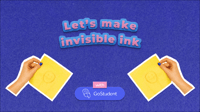LEARNING OUTSIDE OF SCHOOL
Helping Your Child with Telling the Time
- September 4, 2022
- In LEARNING OUTSIDE OF SCHOOL
- 6 min read
Need to teach your child this vital life skill? Download our Telling the Time PDF to support your child learn to tell the time the right way.
How to Teach Your Kids Times Tables + Free Times Table Chart!
- April 20, 2022
- In LEARNING OUTSIDE OF SCHOOL
- 6 min read
Stuck on how to teach your kid times tables? Look no further. We have the best ways to learn that you and your kid will enjoy!
Making a Splash! What’s the Best Age to Start Swimming Lessons?
- April 13, 2022
- In LEARNING OUTSIDE OF SCHOOL
- 9 min read
Is your child ready to start learning to swim? Our guide to swimming lessons will help you find out whether it’s time for them to take the plunge.
Give it a Try, it’s DIY! Let’s Make an Inspiration Board
- April 11, 2022
- In LEARNING OUTSIDE OF SCHOOL
- 6 min read
Need a fun way to motivate and inspire your teenager? We’ve created an easy-peasy DIY video that should help keep their spirits up on the daily.
Give it a Try, it’s DIY! Let’s Make a Kawaii Bookmark
- April 8, 2022
- In LEARNING OUTSIDE OF SCHOOL
- 7 min read
This DIY video is for all the book lovers out there, and if your teen doesn’t adore books then share with them the benefits of this wonderful hobby.
Give it a Try, it’s DIY! Let’s Make a Laptop Stand
- April 6, 2022
- In LEARNING OUTSIDE OF SCHOOL
- 7 min read
Got some cardboard lying around? Great! For this DIY video, cardboard is the main ingredient. Plus, learn how to make your kids and teens super organised.
Give it a Try, it’s DIY! Let’s Make a Mason Jar
- April 4, 2022
- In LEARNING OUTSIDE OF SCHOOL
- 6 min read
If there’s one way of making sure your teen drinks enough water every day, it’s by making one of these awesome tumblers – check out our video to see how!
Give it a Try, it’s DIY! Let’s Make Speakers
- March 30, 2022
- In LEARNING OUTSIDE OF SCHOOL
- 6 min read
Our latest DIY video requires cardboard, glue and steady hands – the results will bring music to your teen’s ears.
Give it a Try, it’s DIY! Let’s Make Invisible Ink
- March 28, 2022
- In LEARNING OUTSIDE OF SCHOOL
- 6 min read
Has your child ever wanted to send a secret message? Our latest DIY vid is for all those curious minds who want to do just that.
Give it a Try, it’s DIY! Let’s Make a Pencil Holder
- March 25, 2022
- In LEARNING OUTSIDE OF SCHOOL
- 6 min read
Check out our new DIY video where we use household rubbish to make something jazzy and new!
Should My Child Take Graded Music Exams? The Pros of Music Assessments
- March 21, 2022
- In LEARNING OUTSIDE OF SCHOOL
- 5 min read
Graded music exams have many benefits, but does your child need to take them? We’re here to fill you in.
Our Top 10 Sensory Play Activities for Preschoolers
- March 21, 2022
- In LEARNING OUTSIDE OF SCHOOL
- 9 min read
From bath time activities to slamming pots and pans, read on for our top ten sensory play activities which will help your child develop, grow and learn…
Give it a Try, It’s DIY! Let’s Make a Friendship Bracelet
- March 18, 2022
- In LEARNING OUTSIDE OF SCHOOL
- 6 min read
Creativity boosts mood and eases negative emotions. Get creative at home by following our new DIY vid, and find out why creativity is so important.
Give it a Try, It’s DIY! Let’s Make a Tornado in a Bottle
- March 16, 2022
- In LEARNING OUTSIDE OF SCHOOL
- 6 min read
If your youngster loves science and getting crafty, they’ll love this step-by-step video on how to make their very own tornado!
Which Instrument is Best for Children to Learn and Why?
- March 15, 2022
- In LEARNING OUTSIDE OF SCHOOL
- 6 min read
Which instrument is best for children to learn and why? Take a look at what musical ability is all about and how to help your child choose an instrument.



















